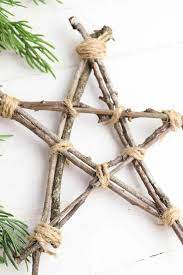Tips for a Greener Christmas
- louiseschenk
- Nov 16, 2023
- 4 min read
As people begin to plan for Christmas I wanted to take the opportunity to put together a blog with tips for having a greener Christmas. People are increasingly aware that Christmas generates more waste than any other time of the year, in 2021 alone, the Environment Agency estimated the amount of cardboard packaging produced over the festive period was in excess of 300,000 tonnes.

Food consumption increases by about 80 percent during the Christmas season, compared to the rest of the year, with a significant environmental impact.
In Britain alone, more than ten million turkeys are consumed on the 25th December, and on average a billion pounds worth of food is thrown away as more food is bought and cooked than can be physically eaten.
An estimated four billion pounds are spent each year on unwanted gifts in the UK alone, that is estimated to be the equivalent to nearly five million tonnes of CO2. Is it estimated that up to 40 percent of toys given away at Christmas will be thrown away by March.
TREE TIPS Buying a real Christmas tree from a certified supplier will ensure the tree is from a legal and sustainable source, and you can ensure the tree can be recycled responsibly. . Artificial Christmas trees needs to be used for approximately 10 years for their environmental impact to be less than that of a real tree. A green alternative is a potted tree that can be planted outside after the festive season, if you don’t have space to plant it, you could keep it in its pot outside.

GIFTS Explore giving eco gifts to family and friends. It could be something reusable, like a coffee cup or something with eco credentials which could inspire a more sustainable lifestyle. You could consider a membership to a charity or wildlife trust, helping to support environmental work.
There are other great alternative gifts, Oxfam offers alternative gifts such as buying a goat to help a family in the third world, funding educational opportunities, food for children, or contributing towards projects that provide water pumps and wells in remote villages.

Wrapping paper with glitter or foil cannot be recycled, some people get creative by reusing wrappings or use plain paper and potato stamps to decorate parcel paper and adding a sprig of foliage for that Christmas feel.
Instead of adding plastic ribbons to your gifts that will end up in landfill, sustainable alternatives include a fabric bow that can be kept and re-used t. Look for things you already have and repurpose them to decorate your Christmas gifts. When fabric bows/ribbons come to the end of their life they can be disposed of with textiles recycling. Furoshiki is the Japanese art of using fabric to wrap gifts. Check out this link to see how its done and as a way to repurpose old scarves. https://www.youtube.com/watch?v=xzviuJDJvjg

GREETING CARDS We throw away approximately 1 billion Christmas cards every year, it would take the equivalent of 33 million trees to make that amount of card. Avoiding sending Christmas cards can reduce environmental impact, by as much as five pounds of carbon dioxide each card. Buy cards printed on FSC-certified, recycled card and are recyclable. Some cards have detachable items on the front that contain wildflower seeds which can be planted in soil in the new year. Even better go for the personal touch and make your own from recycled card. Remember, as with wrapping paper, if cards are decorated with glitter or foil, they can’t be recycled.

FOOD When it comes to cooking Christmas, dinner buy as many items as possible from local suppliers, such as your meat, fruit and veg. With shops closed for one day buy what you need and don't over buy perishable goods, particularly dairy products which are harmful to the environment when poured down the kitchen sink, which is actually a criminal offence for catering businesses.

Avoid wreaths adorned with plastic accessories and glittery decorations, not only are these made using non-sustainable materials, but they can be harmful for birds and wildlife if hung outside. Go for a real, fresh wreath made using seasonal, natural foliage and adornments. Even better, make your own with natural resources from your own garden such as leaves and pine cones.
Christmas crackers are often laden with glitter, making them unrecyclable. They are usually filled with plastic novelties that are discarded shortly after the Christmas dinner has been eaten. If crackers are an important feature of your festivities consider making your own unique Christmas crackers without the environmental cost by using recyclable paper and materials.

Avoid using single use decorations, the move towards sustainability gives people an opportunity to get crafty and make some homemade decorations using natural resources such as pinecones, you can even make your own natural star using twigs for the top of your tree.
Eco-friendly home made Christmas decorations are fun to make, and make thoughtful gifts.

As Christmas has become increasingly commercialised it puts more pressure on an already exhausted planet. It is understandable that the scale of climate change makes people feel very helpless as individuals, but all the small actions really do add up to making a big difference.
Christmas doesn’t have to cost the earth and as we begin to plan festivities there are many simple steps we can all take to make Christmas more sustainable for one and all.
Please share your eco tips and pictures of crafty festivities and I will feature them in the Yule issue of Living Magically.
Blessed Be Lou X





Comments